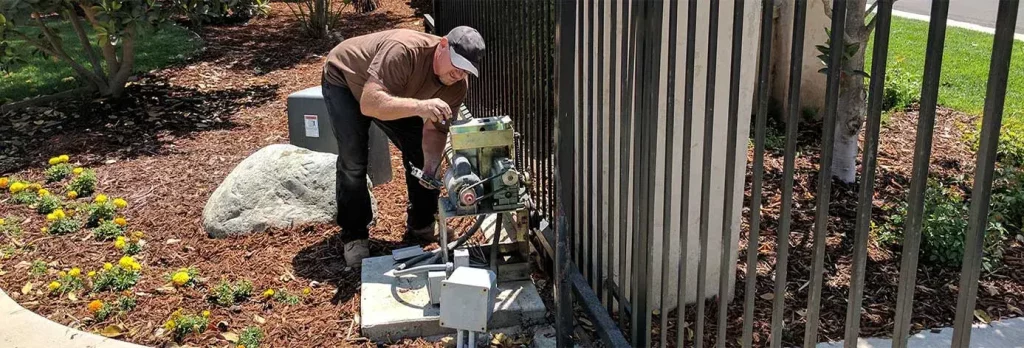Like a suit of armor that protects a castle, fences serve as the first line of defense for homes, keeping intruders out while maintaining the sanctity of personal space.
However, over time and with exposure to harsh weather conditions, even these steadfast protectors can falter and require repair.
This article elucidates the essential steps required for fence repair. Using an objective approach based on detailed instructions and expert terminology, this academic-style guide aims to equip readers with practical advice they can apply in their own circumstances.
The process of repairing a fence is more than just nailing boards together; it requires careful planning, selection of appropriate tools and materials, and an understanding of the procedure involved.
By following this step-by-step guide to fixing your fence, readers will not only gain knowledge but also develop skills that can be used in various aspects of home maintenance.
The goal here is not merely to provide information but also foster a sense of belonging among readers by engaging them actively in mastering this crucial aspect of home improvement.
Tools and Materials Needed
To undertake a fence repair, an assortment of tools and materials is indispensable; interestingly, it has been estimated that over 75% of homeowners do not possess the necessary range for such tasks.
The list begins with basic hand tools such as a claw hammer, pliers, wood chisel, and tape measure. These are pivotal in disassembling the damaged sections of the fence and taking precise measurements for replacement parts.
A circular saw or handsaw is essential for cutting wooden parts to size while a power drill simplifies the process of making holes for screws or nails. Other specialized tools include a post hole digger for removing old posts or creating new ones, and a level to ensure that all elements align correctly.
Furthermore, there’s also the matter of suitable materials required to restore the fence to its original state. Pressure-treated lumber is one popular choice due to its durability against weather conditions and pests; this can include everything from posts and rails to pickets depending on your specific needs.
In addition, fasteners such as galvanized nails or exterior-rated screws are critical components in securing these different parts together securely. It may be beneficial to consider using vinyl-coated wire if your fence incorporates mesh panels: it resists rusting better than uncoated metal options while still providing substantial strength.
Lastly but importantly, high-quality exterior paint or stain is recommended for enhancing aesthetics as well as adding an extra layer of protection against environmental damage.
Step-by-Step Guide to Fixing Your Fence
Initiating the process of restoring one’s barrier involves a systematic approach, which, if followed meticulously, can yield successful results.
Firstly, an assessment of the extent of damage must be undertaken to determine whether a full replacement is necessary or if minor repairs will suffice. This evaluation can help in identifying broken or rotten boards that need replacement and loose nails that require tightening. It also provides an opportunity to inspect the fence posts for any signs of instability or decay that could compromise the structural integrity of the fencing system.
After evaluating and analyzing the condition of your barrier, it becomes crucial to take appropriate action based on your findings:
– If boards are damaged beyond repair, they should be removed carefully using a pry bar and new ones installed in their place.
– Loose nails can be tightened with a hammer while severely rusted ones necessitate replacement.
– Fence posts showing signs of instability may require additional support such as concrete footings.
– In case rot has set in, particularly at the base where wood comes into contact with soil, it might necessitate not just replacing affected sections but also implementing preventative measures like gravel fill-in or installation of concrete mowing strips.
The above steps showcase practical advice for repairing fences. Employing these strategies does not only ensure optimal function but also contributes towards maintaining an aesthetically appealing boundary around your property – fostering a sense of belonging and pride among homeowners.
Backyard Barriers: Preventive Measures And Repair For Fences

